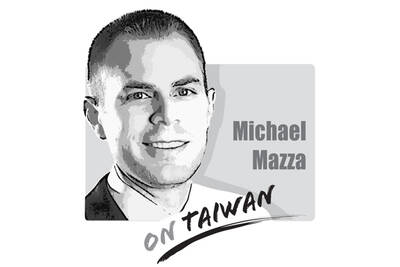The economy grew 8.01 percent year-on-year in the second quarter, outpacing the 5.45 percent growth recorded in the previous quarter and beating the Directorate-General of Budget, Accounting and Statistics’ (DGBAS) forecast of 7.96 percent issued late last month, the agency said on Friday. On a quarter-on-quarter, seasonally adjusted annualized basis, GDP jumped 12.78 percent, accelerating from 6.16 percent in the first quarter.
It was the strongest quarterly growth since the second quarter of 2021. The DGBAS attributed the robust performance mainly to a 35.02 percent surge in real exports of goods and services — up from 19.38 percent growth in the first quarter — driven by global demand for artificial intelligence (AI) and other emerging technologies, as well as front-loading by international customers ahead of US tariff measures.
Overall, net external demand accounted for 6.05 percentage points of GDP growth last quarter, a sharp rise from just 0.55 points in the previous quarter, the agency said. Domestic demand contributed the remaining 1.96 percent, led by gross capital formation, which grew 13.87 percent year-on-year, followed by government consumption (up 2.85 percent) and private consumption (up 0.49 percent).
Even after adjusting for the sharp appreciation of the NT dollar against the US dollar, GDP growth was still strong. Looking ahead, sustained global demand for advanced AI chips and related information and communications technology (ICT) products is expected to underpin the nation’s economic resilience. Still, the front-loading effect that boosted second-quarter exports is likely to fade in the second half as the US’ tariffs take effect, the agency said.
Reflecting these dynamics, the agency on Friday projected that exports would remain strong, expanding 24.2 percent in the third quarter and 16.65 percent in the fourth on an annual basis.
It also revised its full-year GDP growth forecast upward to 4.45 percent, from 3.1 percent in May, despite expectations that private consumption would stay muted in the second half.
AI remains the central driver of Taiwan’s stronger-than-expected outlook. However, the semiconductor and ICT sectors still face uncertainty from an ongoing US Section 232 investigation under the Trade Expansion Act of 1962.
However, traditional industries are expected to underperform in the second half of the year, with Washington’s newly announced 20 percent tariffs on Taiwanese goods — higher than the 15 percent for Japan, South Korea and the EU — posing further headwinds, even as the government insists the higher rate is temporary.
Even if the tariffs are eventually lowered, many traditional industries continue to operate on thin margins and have already shown weak export performance this year. The Ministry of Finance on Aug. 8 reported that exports of plastics and rubber products, textiles and transportation equipment in the first seven months fell 5.8 percent, 5.1 percent and 0.9 percent year-on-year respectively.
By contrast, exports of ICT products surged 67.2 percent, electronic components (including semiconductors) rose 23.9 percent, and shipments of machinery, electrical equipment, and optical and precision instruments increased 5.7 percent, 12.6 percent and 10.9 percent.
This divergence showed the declining global competitiveness of Taiwan’s non-tech sectors, a trend that might have taken root well before the imposition of new US tariffs. If the structural gap between technology and traditional industries continues to widen, it would entrench uneven development in Taiwan’s industrial base, creating a macroeconomic challenge for policymakers.
Addressing tariffs alone would not be enough: The nation needs new industrial policies to establish a firmer foundation for stable development.

Taiwan has lost Trump. Or so a former State Department official and lobbyist would have us believe. Writing for online outlet Domino Theory in an article titled “How Taiwan lost Trump,” Christian Whiton provides a litany of reasons that the William Lai (賴清德) and Donald Trump administrations have supposedly fallen out — and it’s all Lai’s fault. Although many of Whiton’s claims are misleading or ill-informed, the article is helpfully, if unintentionally, revealing of a key aspect of the MAGA worldview. Whiton complains of the ruling Democratic Progressive Party’s “inability to understand and relate to the New Right in America.” Many
US lobbyist Christian Whiton has published an update to his article, “How Taiwan Lost Trump,” discussed on the editorial page on Sunday. His new article, titled “What Taiwan Should Do” refers to the three articles published in the Taipei Times, saying that none had offered a solution to the problems he identified. That is fair. The articles pushed back on points Whiton made that were felt partisan, misdirected or uninformed; in this response, he offers solutions of his own. While many are on point and he would find no disagreement here, the nuances of the political and historical complexities in
Taiwan faces an image challenge even among its allies, as it must constantly counter falsehoods and misrepresentations spread by its more powerful neighbor, the People’s Republic of China (PRC). While Taiwan refrains from disparaging its troublesome neighbor to other countries, the PRC is working not only to forge a narrative about itself, its intentions and value to the international community, but is also spreading lies about Taiwan. Governments, parliamentary groups and civil societies worldwide are caught in this narrative tug-of-war, each responding in their own way. National governments have the power to push back against what they know to be
Taiwan is to hold a referendum on Saturday next week to decide whether the Ma-anshan Nuclear Power Plant, which was shut down in May after 40 years of service, should restart operations for as long as another 20 years. The referendum was proposed by the opposition Taiwan People’s Party (TPP) and passed in the legislature with support from the opposition Chinese Nationalist Party (KMT). Its question reads: “Do you agree that the Ma-anshan Nuclear Power Plant should continue operations upon approval by the competent authority and confirmation that there are no safety concerns?” Supporters of the proposal argue that nuclear power